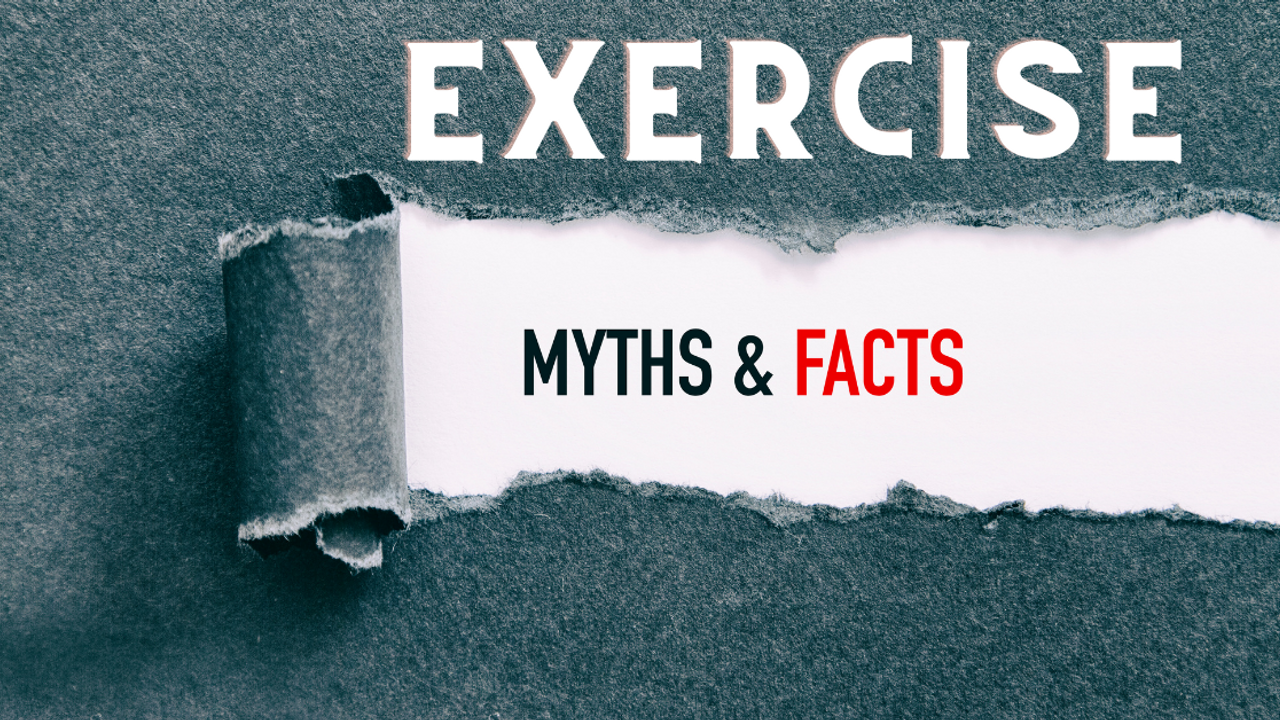Menopause Fitness Moment: Exercise Myths (Debunked)
Apr 03, 2021
A magazine article tells you one thing. The Internet says another. Then your trainer lets you know they’re both wrong. There are many exercise myths out there and our social media culture does not help. Misinformation can be posted anywhere, so it is not surprising that people buy into the myths. Some exercise myths are easily debunked, while others have more staying power because they sound true or seem appealing. I am here to set the record straight based on years of experience and the latest science. Let’s look at some of the most pervasive exercise maxims and sort the wisdom from the bunk. The next time someone tells you that weight lifting makes you too bulky, that fat can turn into muscle, or that you have to work out hard or not at all, you’ll not only know if what they’re saying is true — you’ll also know why.
TRUE OR FALSE? Long bouts of low-intensity exercise are better than short bouts of high-intensity exercise
False: There are benefits to low-intensity exercise and high-intensity exercise. Neither one is better than the other.
Fat loss and weight loss both depend on total energy cost (how many calories are burned during activity). The higher your intensity, the more calories you burn. If you want to burn more calories quickly, then high-intensity is probably the way to go. What matters most is getting the results you desire. Pay attention and observe as you go. If you are getting results you like, keep it up. If you are not getting the results you want, it is time to change your workout. During menopause, paying attention to what each type of exercise does in regards to your menopause symptoms also becomes important. For example, you might enjoy high-intensity workouts but they increase your hot flashes. In that case, a slower-paced but longer bout could be more beneficial. One specific benefit of high-intensity interval training is that it is the most effective way to stimulate excess post-exercise oxygen consumption (EPOC). This means that you will continue burning calories after your workout because your body is hard at work replacing energy and repairing muscles.
TRUE OR FALSE? Workout hard or not at all
False: Research has shown that a little exercise is better than none.
Any activity counts. In fact, very small amounts of activity seem to do a great deal of good. Taking the stairs, parking further away, walking, gardening, even house cleaning counts as movement that accrues throughout the day. For menopausal women, exercising at a lower level can often be even more beneficial than harder workouts. Walking or mindful exercising, for instance, has been shown to be very effective in the treatment of menopausal depression and anxiety. In my experience, it is important to find what you like because the best workout is one that you will actually DO. Initiating activity can be the most challenging part of working out so find an activity you like and you’ll be more likely to do it. When my clients start off slowly and we incorporate activities they prefer, they work out more because it does not feel forced. For me, workouts are “me time.” No matter how much time I have, I will put on my headphones, play my favorite music and get into my happy place.
TRUE OR FALSE? Crunches or sit-ups will target your belly fat.
False: You can’t pick and choose areas to lose fat.
Spot-targeting fat just isn’t very effective. Sorry about that, but it’s science. Spot exercising, such as sit-ups and crunches, can tighten abdominal muscles, but won't get at the real culprit, fat. If you want to lose fat from a specific spot, you need to lose overall body fat. I recommend a combination of resistance training and regular exercise, along with a healthy diet.
TRUE OR FALSE? To prevent injuries, always stretch before exercise.
False: There is no definitive evidence to suggest stretching prevents injuries. In fact, Static stretching before exercise can actually make muscles more susceptible to injury. Static stretching is probably the most familiar type of stretching. We see it all the time - a runner holding their ankle while standing against a tree. Static stretching consists of holding a position for a determined amount of time, usually 20-40 seconds. BUT there is little scientific evidence to suggest that pre-exercise static stretching prevents injury or enhances performance. It is a good idea to warm up to prepare for a workout. Instead of static stretching, try performing a "dynamic warmup." After your workout, it’s a great idea to include static stretching because your muscles have been warmed up and are ready to hold longer-lasting positions.
TRUE OR FALSE? Exercise turns fat into muscle and muscle turns into fat without exercise
False: Fat and muscle are two separate and distinct types of tissue.
Think of it this way: You cannot turn a strawberry into a banana. What happens is that the ratio of muscle to fat changes. If your lifestyle becomes more sedentary, your muscles start to shrink. Often, calorie consumption is not adjusted to less activity, which results in more fat accumulation. In the end, you have less muscle and more fat. Rather than one turning into the other, the reality is that one takes the place of the other.
TRUE OR FALSE? Weight training will make you bulk up.
False: Weight training makes you healthy and strong, period.
Weight training does create some muscle definition, but “bulk” is not something that happens by accident. Gaining muscle and keeping it requires hard work and dedication. By adding weight training to your fitness routine, you incorporate muscle-strengthening moves that work major muscle groups not worked by aerobic or cardio. Weight training promotes bone density, strengthens your heart, and burns fat. Resistance training, especially heavy resistance training, has been shown to increase resting metabolic rate. This means that you’re burning more calories in a resting state. More research has linked strength training to improved focus and cognitive function, as well as reduced anxiety and greater well-being. The truth is, weight training is now recognized as an important part of good health and well-being at all ages. Go lift some heavy shit!



